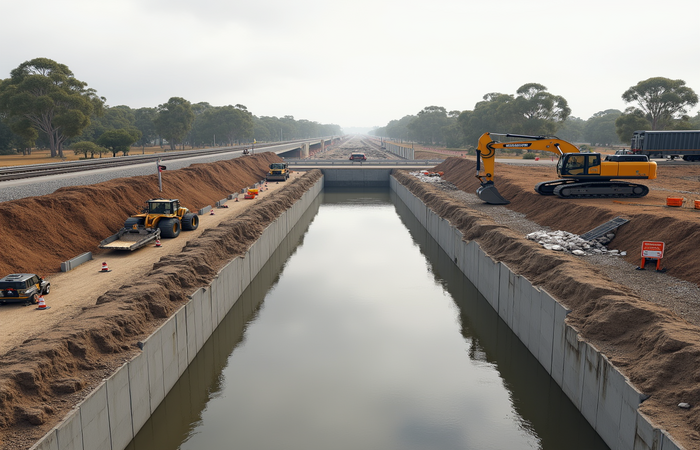San Francisco Muni’s Tech Leap: SelTrac CBTC Upgrade

This article examines the modernization of San Francisco’s Muni Railway signaling system through the implementation of Hitachi Rail’s SelTrac CBTC (Communications-Based Train Control) technology. The project represents a significant upgrade to the existing infrastructure, impacting approximately 160 million annual passenger journeys. The 71-mile Muni network, a complex system encompassing cable cars, streetcars, and light rail operating both above and below ground, presents unique engineering challenges. This modernization aims to improve service capacity, reliability, and safety, ultimately enhancing the overall passenger experience and laying the groundwork for future network expansion. We will analyze the technical aspects of the SelTrac system, the benefits anticipated from its implementation, and the broader implications for urban transit systems globally.
SelTrac CBTC: A Technological Leap for Muni
Hitachi Rail’s SelTrac CBTC system represents a paradigm shift from traditional signaling technologies. Unlike older systems reliant on track circuits and physical signals, SelTrac utilizes wireless communication between trains and wayside infrastructure. This allows for precise train location tracking and automated control, enabling significantly shorter headways (the time interval between trains) and increased operational efficiency. This sophisticated technology allows for dynamic train control, optimizing train speeds and headways based on real-time conditions. The system’s inherent redundancy and robust design contribute to enhanced safety and reliability, minimizing the risk of delays and disruptions.
Addressing the Unique Challenges of the Muni Network
The Muni system presents a unique set of challenges due to its mixed-mode operation (cable cars, streetcars, and light rail) and the combination of above-ground and underground sections. The seamless integration of SelTrac across the entire network requires careful planning and execution. The project necessitates not only the installation of new communication infrastructure but also the integration of existing systems and potentially upgrades to the power supply infrastructure. The successful implementation requires a thorough understanding of the Muni’s operational nuances and a tailored approach to address the distinct characteristics of each segment.
Benefits and Impacts of the Modernization
The anticipated benefits of the SelTrac implementation are substantial. The increased capacity resulting from reduced headways will translate to improved service frequency, reduced passenger wait times, and a more efficient utilization of rolling stock. The enhanced reliability, stemming from the system’s advanced technology and built-in redundancy, will contribute to a significant reduction in service disruptions. This modernization will improve punctuality and increase the overall passenger experience. The project will help to improve the network’s resilience to operational difficulties and significantly increase the capacity of the transit system. Increased capacity and reliability will contribute to better revenue generation for the San Francisco Municipal Transportation Agency (SFMTA). The long-term service and maintenance agreements ensure continued system performance and optimization.
Implications for Urban Transit Systems
The Muni modernization project serves as a compelling case study for other urban transit systems worldwide. The successful implementation of SelTrac CBTC on a complex network like Muni demonstrates the feasibility and benefits of adopting advanced train control technologies. This project highlights the significant improvements in capacity, reliability, and safety that can be achieved through strategic infrastructure upgrades. The lessons learned from this undertaking will be valuable to transit agencies seeking to enhance their operations and meet the growing demands of urban mobility. The experience gained from this project will be invaluable to other cities and transit agencies considering similar upgrade projects.
Conclusions
The modernization of San Francisco’s Muni Railway signaling system with Hitachi Rail’s SelTrac CBTC technology represents a transformative step for urban transit. This project addresses the unique challenges posed by Muni’s diverse network – encompassing cable cars, streetcars, and light rail across both above-ground and underground sections. The implementation of SelTrac promises significant improvements in several key areas. Firstly, the system’s advanced capabilities will drastically increase the network’s capacity, reducing passenger wait times and enhancing service frequency. Secondly, SelTrac’s reliability will minimize service disruptions, leading to a more consistent and predictable transit experience. Thirdly, the enhanced safety features inherent in the CBTC technology contribute to a safer overall environment for passengers and staff. The ten-year service agreement, along with the option for an additional decade, ensures sustained support and optimization of the system throughout its lifespan. The successful completion of this project will not only benefit San Francisco but will also serve as a model for other cities seeking to modernize their transit infrastructure and provide a more efficient, reliable, and safe public transportation system.
Beyond the immediate benefits to Muni, this initiative carries broader implications for the global transit industry. The successful integration of SelTrac on a complex, multifaceted network such as Muni validates the effectiveness of CBTC technology in addressing the challenges faced by many major urban areas. The project underscores the importance of investing in modern signaling systems to improve operational efficiency, enhance safety and capacity, and meet the evolving needs of urban populations. The case of Muni shows the potential for significant improvements in public transit, ultimately benefiting millions of commuters and shaping the future of urban mobility worldwide. The extensive use of technology in the project could lead to other modernization efforts using new technologies.





